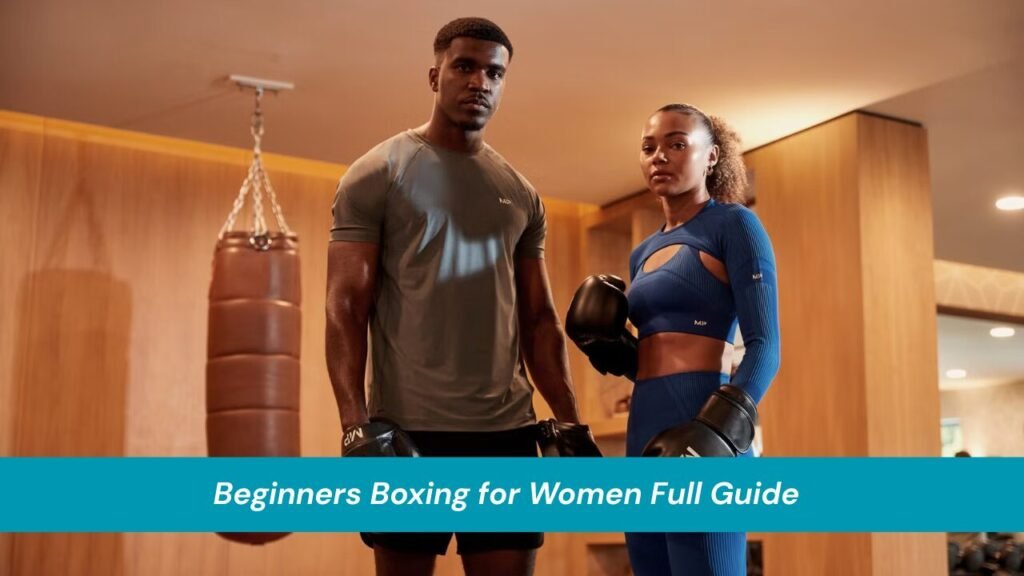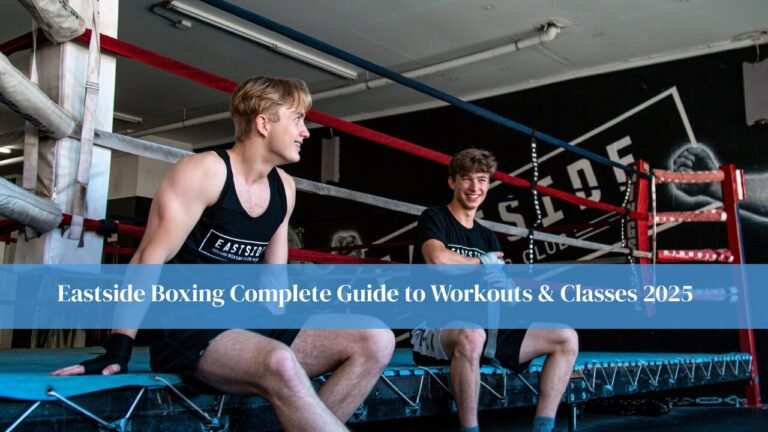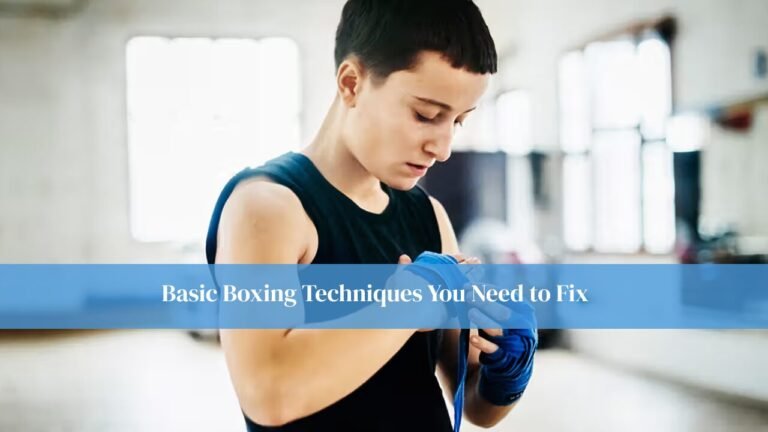Boxing has long been associated with fierce competition, heavy gloves, and championship belts, but in recent years, it has gained popularity among women as one of the most empowering and effective ways to stay fit. The rise of fitness boxing programs, women-only classes, and online tutorials has opened doors for complete beginners who want to explore the sport without the intimidation of stepping into a competitive ring. If you are curious about beginners boxing for women, this guide provides everything you need to know—from understanding the benefits of boxing, choosing the right gear, and structuring your first workout, to avoiding common mistakes and building confidence with every punch.
By the time you finish reading, you will have a clear roadmap to start your boxing journey, whether your goal is fitness, self-defense, stress relief, or simply trying something new.
Why Boxing Appeals to Women Today
The modern fitness world is filled with countless workout options, but boxing holds a unique place because it combines strength, endurance, mental focus, and emotional release. Unlike a treadmill session or a standard aerobics class, boxing challenges both the body and the mind. For many women, the appeal lies not just in burning calories but in the sense of empowerment that comes from learning how to throw a punch and defend oneself.
The physical benefits are undeniable. A well-structured boxing workout engages the entire body, from the fast-twitch muscles in your legs and core to the endurance needed in your shoulders and arms. Unlike isolated weightlifting exercises, boxing integrates movement across multiple planes, forcing you to pivot, rotate, and strike while maintaining balance. This creates a functional kind of strength that carries over into daily activities, making everyday movements feel easier and more controlled.
At the same time, boxing provides an outlet for stress that few other workouts can match. The rhythmic sound of gloves hitting pads or a heavy bag becomes almost meditative, allowing frustration, anxiety, or built-up tension to dissipate with every strike. Many women report that boxing helps them manage stress and mental health just as much as it helps them tone muscles or lose weight.
Perhaps the most overlooked benefit is the community aspect. While boxing might appear to be an individual sport, most beginner programs are designed around small groups where participants motivate one another, celebrate progress, and build camaraderie. For women who may feel intimidated by traditional weight rooms or high-intensity group classes, boxing gyms often provide a supportive, inclusive space to train.
Essential Gear for Beginners
One of the most common concerns for beginners is whether boxing requires expensive gear or equipment. The truth is that starting out is surprisingly simple. At the very minimum, you need a pair of gloves and hand wraps, and even those can usually be borrowed or rented at most gyms before you invest in your own.
Gloves are your most important purchase. For beginners, gloves weighing between 12 and 14 ounces provide the right balance of protection and maneuverability. They cushion your fists and wrists from the repetitive impact of hitting pads or bags. Hand wraps are equally essential because they add an extra layer of protection, securing your knuckles and stabilizing your wrists. Many newcomers underestimate their importance, but skipping wraps can lead to injuries that slow progress.
Clothing is another consideration. While there is no strict uniform for fitness boxing, breathable fabrics that allow for unrestricted movement will keep you comfortable. Loose or overly baggy clothing is not ideal, as it can get in the way of punches and movement drills. Lightweight sneakers or boxing-specific shoes help with grip and agility, ensuring you can pivot and move without slipping. A simple addition like a refillable water bottle and a towel will also go a long way, since boxing workouts tend to be sweat-heavy and physically demanding.
Investing in quality gear after a few sessions makes the experience more enjoyable and safe, but beginners should feel confident that they can start training with minimal cost.
What to Expect in a Beginner’s Class
Walking into your first boxing class can feel intimidating, but most gyms structure beginner sessions in a way that emphasizes learning and enjoyment rather than high-intensity sparring. Classes typically begin with a warm-up, often involving dynamic movements like jumping rope, shadowboxing, or light jogging. These exercises get the body moving and prime your muscles for the more explosive actions that come later.
Once warm, instructors usually shift the focus to technique. This stage is critical because learning the basic punchesmjab, cross, hook, and uppercut is the foundation of everything else in boxing. Proper stance and footwork are equally important, ensuring that your body remains balanced and protected as you throw and defend. Coaches may have students practice combinations slowly, often in the mirror or against pads, to ensure that movements are both accurate and safe.
After technique comes the heart of the workout: bag work or pad drills. Striking a heavy bag provides resistance and builds strength, while pad work with a coach improves timing and accuracy. Beginners often find this portion exhilarating, as it allows them to put together combinations and experience the rhythm of boxing. Conditioning exercises, such as push-ups, planks, or short bursts of high-intensity drills, usually follow to strengthen supporting muscles and improve endurance.
Finally, a proper cool-down ensures that the body recovers effectively. Stretching, controlled breathing, and sometimes even meditation are included to bring the session full circle. Overall, a beginner boxing class blends learning with fitness, making it both educational and physically rewarding.
Mistakes Beginners Should Avoid
While enthusiasm is essential when starting out, beginners often fall into common traps that can limit progress or even lead to injury. One of the most frequent mistakes is trying to skip past the basics. Many women feel eager to throw powerful punches but neglect the importance of stance and footwork. Without a strong foundation, punches lose both power and precision, and the risk of injury increases.
Another common oversight is neglecting hand wraps. Even if gloves provide cushioning, wraps are what keep your joints and bones stable under impact. Skipping this step might feel like a small shortcut, but it greatly increases the chance of strained wrists or bruised knuckles.
Overtraining is another pitfall. Boxing is intense, and beginners sometimes push themselves to attend too many classes in a short time, thinking that more is better. Without adequate recovery, the body cannot adapt, leading to fatigue and potential burnout. A balanced schedule of two to three classes per week is more sustainable and effective.
Lastly, many beginners compare themselves to more experienced boxers. This mindset can be discouraging. Boxing is a journey where small, consistent improvements matter more than immediate mastery. Everyone progresses at a different pace, and focusing on personal development is the key to long-term success.
Health and Fitness Benefits Backed by Research
Scientific studies consistently highlight boxing as one of the most comprehensive forms of physical activity. A study published in the Journal of Strength and Conditioning Research demonstrated that boxing significantly improves cardiovascular endurance, muscular strength, and coordination. Unlike workouts that focus solely on cardio or weight training, boxing integrates both, delivering a balanced program that develops multiple aspects of fitness simultaneously.
Boxing also enhances agility and reflexes. The need to coordinate punches, footwork, and defensive movements sharpens neuromuscular control, which is valuable not only in sport but also in everyday life. Women who practice boxing regularly often report better posture, improved balance, and reduced risk of falls or injuries in non-sporting contexts.
Psychological benefits are equally noteworthy. According to research on exercise and mental health, boxing can help regulate mood, reduce anxiety, and even alleviate symptoms of depression. The intensity of the workout stimulates endorphin release, while the act of striking provides a sense of empowerment and emotional release that is hard to replicate with other exercises.
Finding the Right Place to Learn
Starting your boxing journey begins with choosing the right environment. Traditional boxing gyms often cater to competitive fighters, but many now offer beginner-friendly programs that focus on fitness and technique rather than sparring. Women who prefer a less intimidating atmosphere may feel more comfortable in boutique studios or gyms that specialize in boxing-based fitness classes.
For those who prefer to train at home, online platforms and mobile apps offer guided sessions that replicate the structure of a gym class. These resources allow beginners to learn the basics at their own pace, with the option to progress to in-person training later.
FAQs
Is boxing safe for women who are complete beginners?
Boxing is safe when practiced under proper guidance. Beginners should focus on learning technique before increasing intensity, and protective gear like gloves and wraps should always be used. Injuries are rare when safety precautions are followed.
How often should beginners train?
Two to three times per week strikes the right balance between learning and recovery. This frequency builds consistency without overwhelming the body, especially for those new to high-intensity exercise.
Do all boxing programs involve sparring?
Not at all. Most fitness-focused boxing programs for women exclude sparring entirely. Sparring is optional and typically reserved for those who want to pursue competitive boxing.
Can boxing support weight loss goals?
Absolutely. A 45-minute session can burn between 400 and 600 calories, depending on intensity. Combined with healthy nutrition, boxing is an excellent tool for weight management.
Do I need prior fitness experience to start boxing?
No previous fitness experience is necessary. Coaches tailor movements to each participant’s ability, making boxing accessible to complete beginners. Many women actually find boxing more engaging than other forms of exercise, which helps them stay consistent.
Conclusion
Boxing is more than just a workout it is a journey that challenges both body and mind while fostering confidence and resilience. For women stepping into the world of boxing for the first time, the experience can be transformative. By focusing on the fundamentals, investing in essential gear, and committing to steady progress, beginners can unlock the physical and emotional benefits that this sport uniquely provides.
Whether your motivation is improving fitness, learning self-defense, or simply finding a workout that excites you, beginners boxing for women offers a pathway to strength and empowerment that goes far beyond the gym. The only thing left is to take that first step, wrap your hands, and throw your first punch you may discover that boxing is not just a workout, but a lifestyle you’ll want to embrace for years to come.




